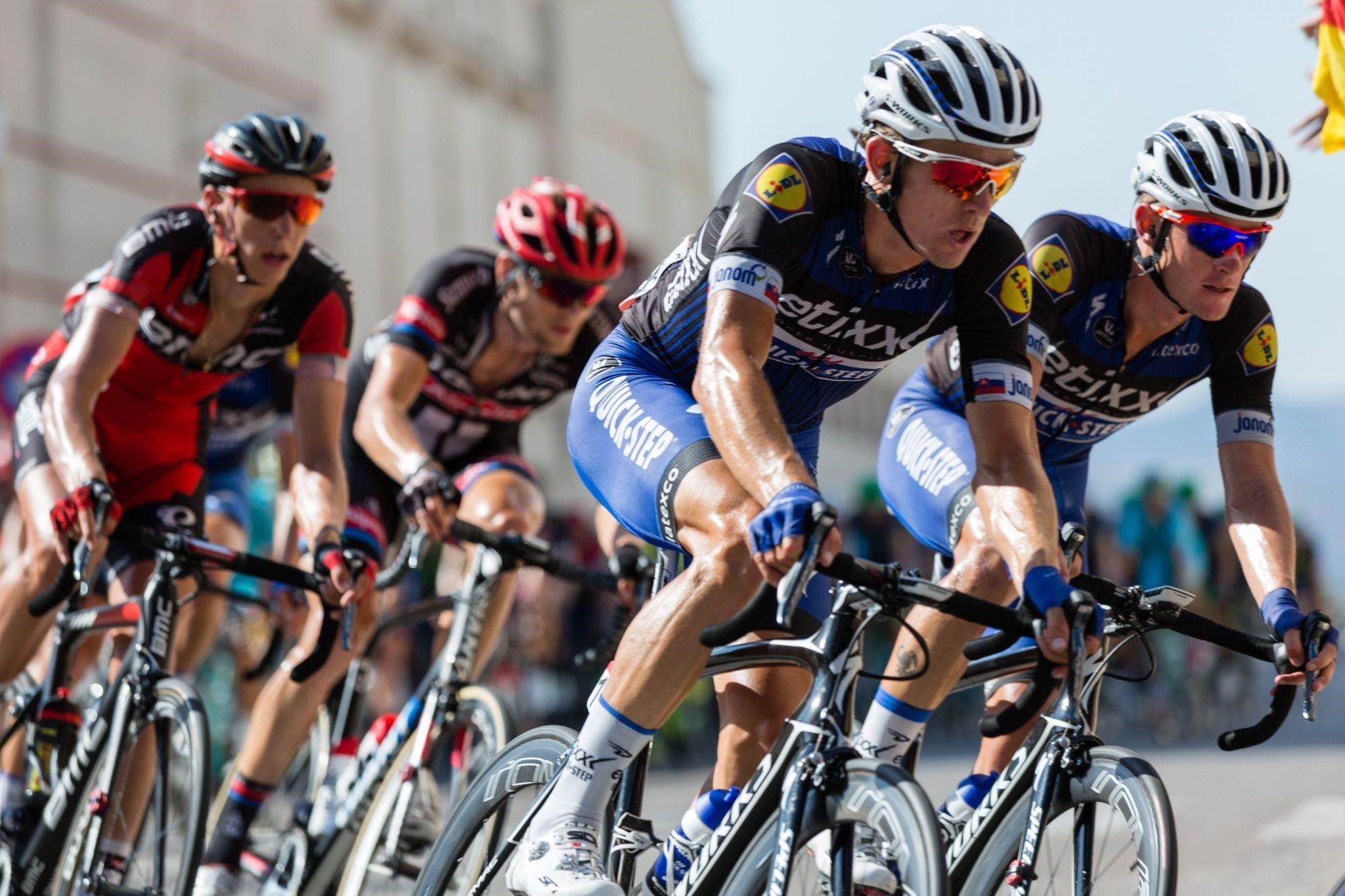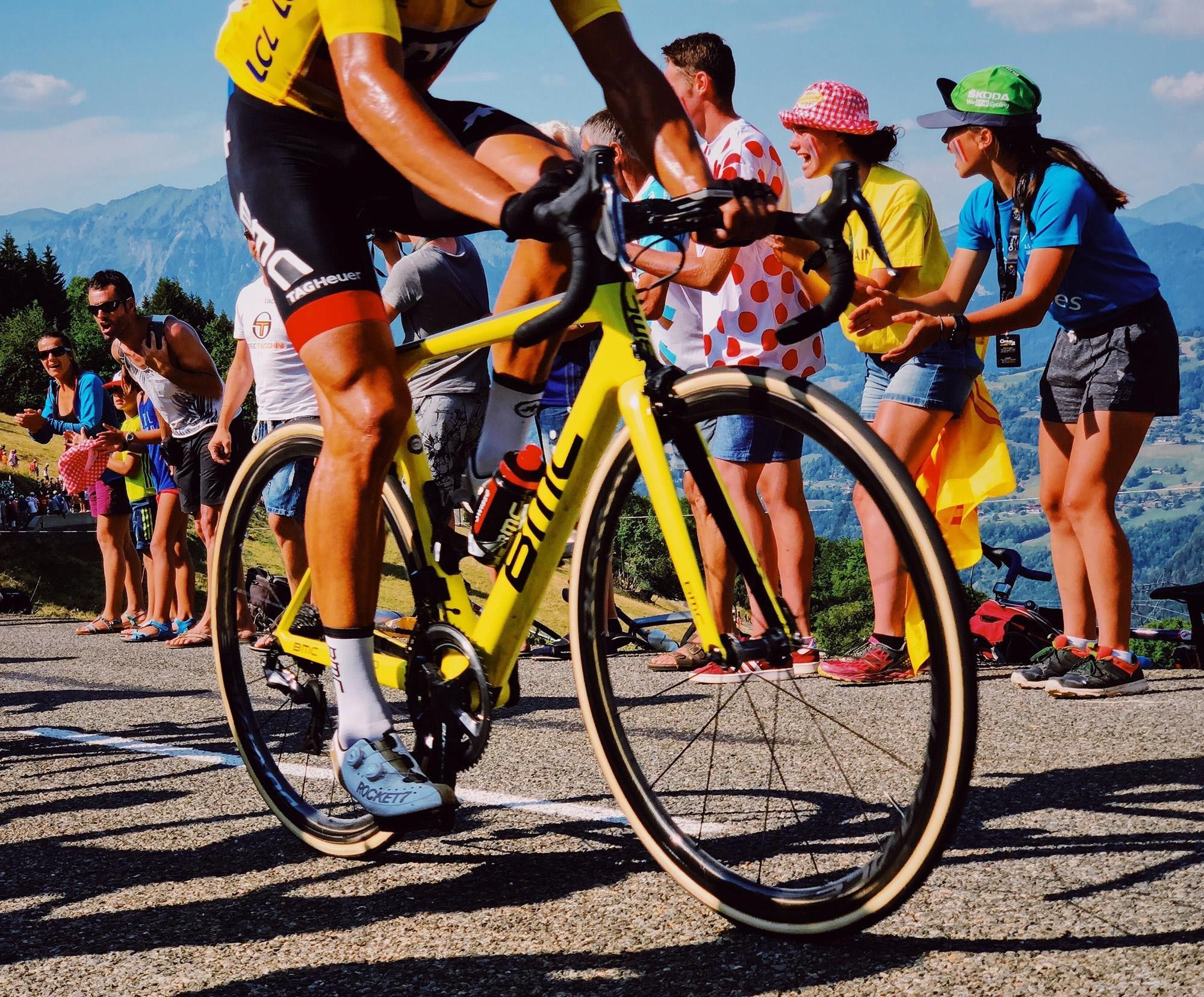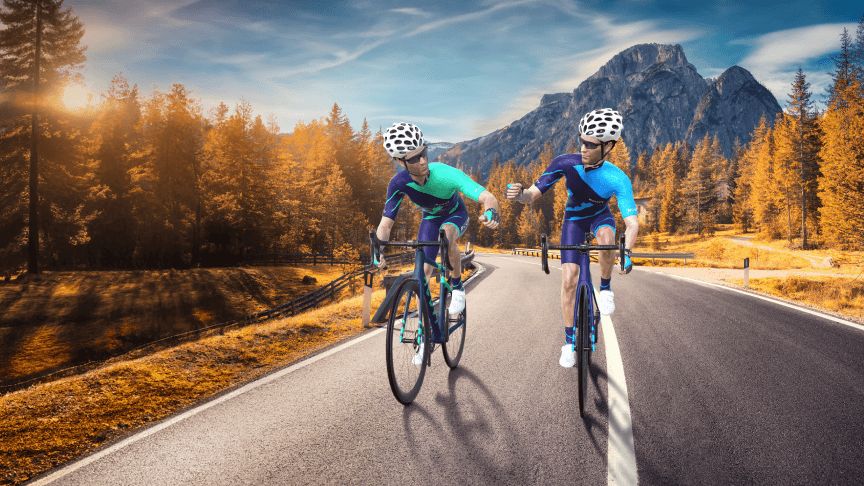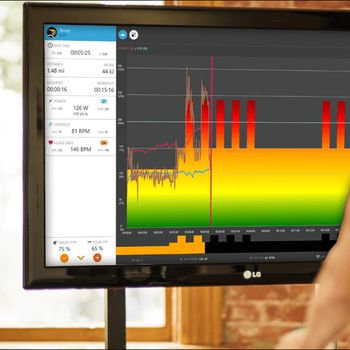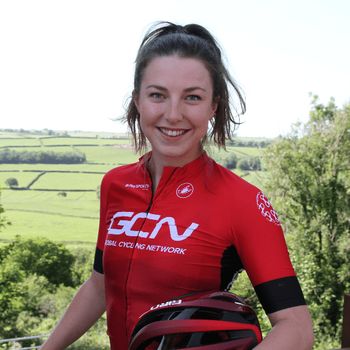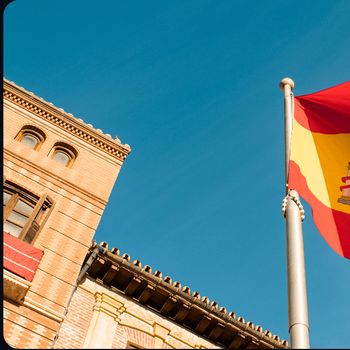The most overall victories Fun Facts
The most overall winners of the Tour
Jacques Anquetil, Bernard Hinault, Miguel Indurain, Eddy Merckx (all 5)
The most overall stage wins
Eddy Merckx, Mark Cavendish (34) (Mark is aiming and hoping to win his 35th at this year’s Tour before he retires)
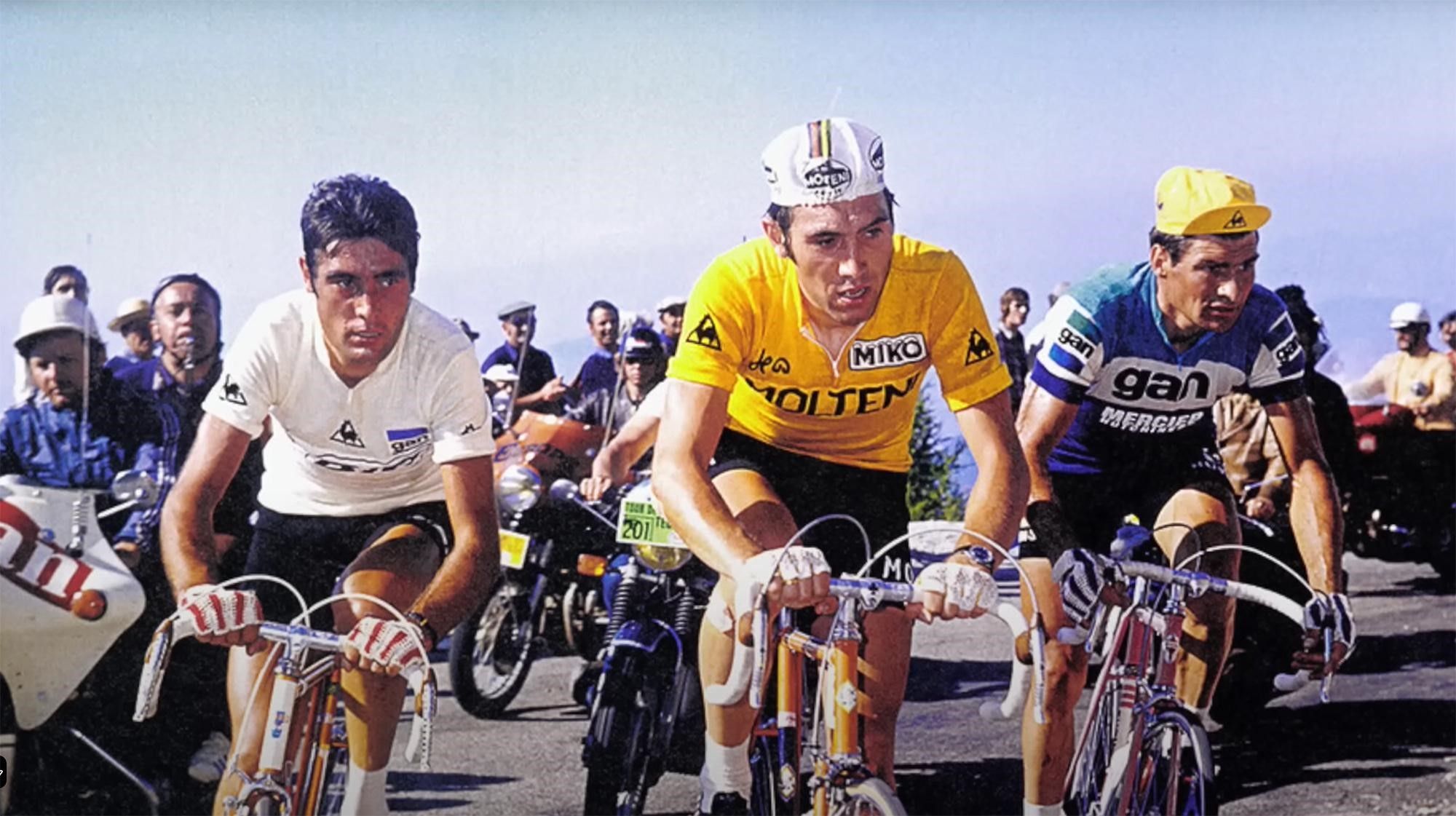 Eddy Merckx won the Tour de France 5 times and the most overall stage wins over time.
Eddy Merckx won the Tour de France 5 times and the most overall stage wins over time.
Some interesting facts framing the backdrops to four of the stages from this year’s Tour de France
Stage 6
The most climbed Col du Tourmalet
In week one on Stage 6 (and also in the Tour de Femmes Stage 16), the pros will battle it out up the Col du Tourmalet, which will be the second of three climbs. The Col is an iconic and legendary climb, and one of the highest paved mountain passes in the French Pyrenees, in the department of Hautes-Pyrénées.
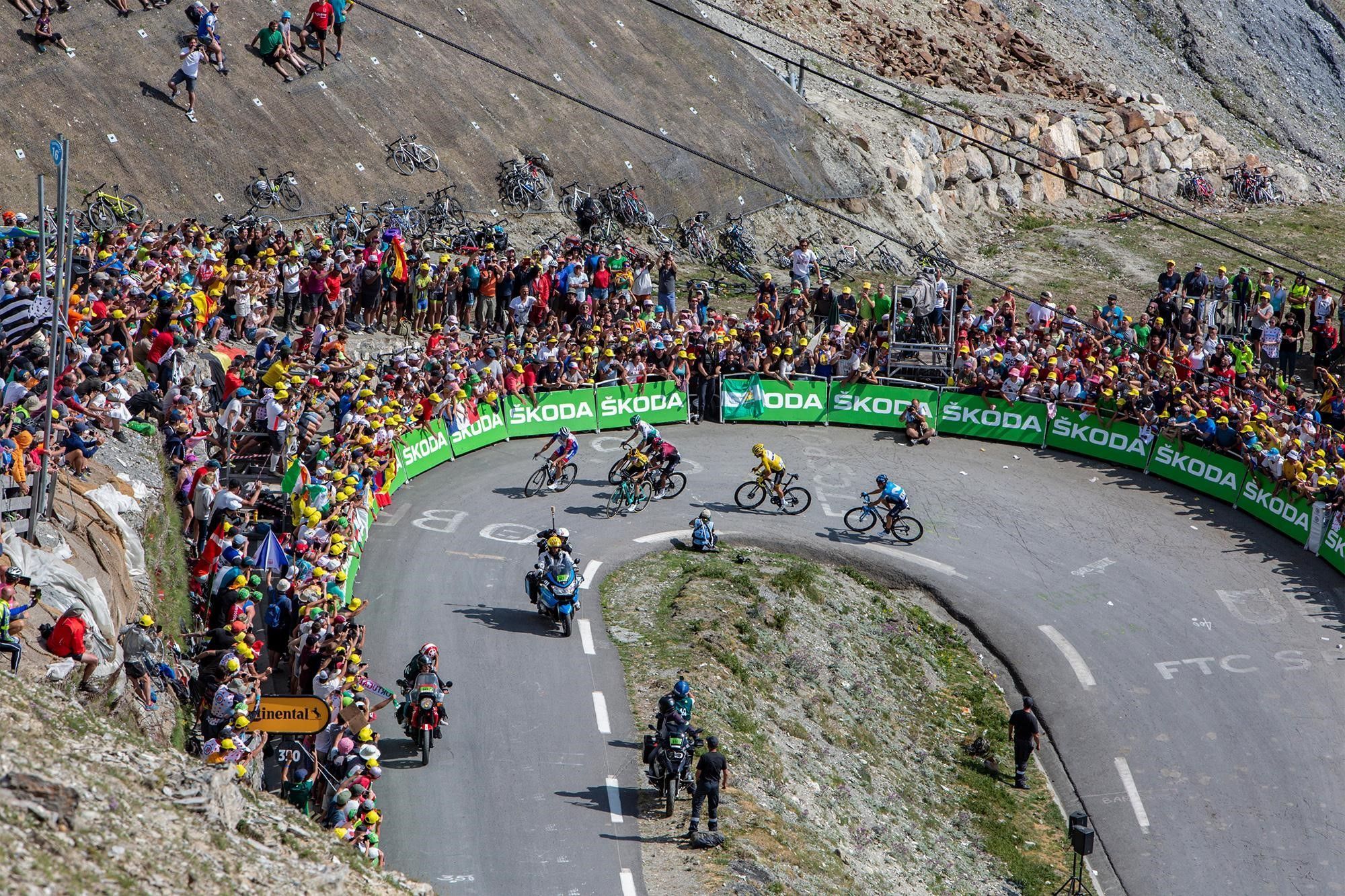 Col du Tourmalet on ROUVY
Col du Tourmalet on ROUVY
Starting from Sainte-Marie-de-Campan, at the foot of the steeper eastern side, the pros climb to the ski station at La Mongie. The first four kilometres head up through the beautiful Vallée de Gripp at 5% gradients which can serve as a good warm-up. Then, the road becomes steep, which remains so for the 12 kilometres that lie ahead. Try the Tourmalet climb yourself on ROUVY from home and compare your time with the STRAVA KOM and QOM.
Stage 9
Puy-de-Dome a fiery spiral up a climb of legends and drama
On Stage 9, starting in Saint-Léonard-de-Noblat, the riders cover a distance of 184 km on this mountainous stage and finish on the legendary and mythical Puy de Dome volcano summit. This bucket-list climb in Auvergne forms part of the Massif Central, and the riders approach it from the Clermont Ferrand side situated on a UNESCO site, and admittance to the final and most brutal 6km is officially only allowed once a year for a limited number of cyclists.
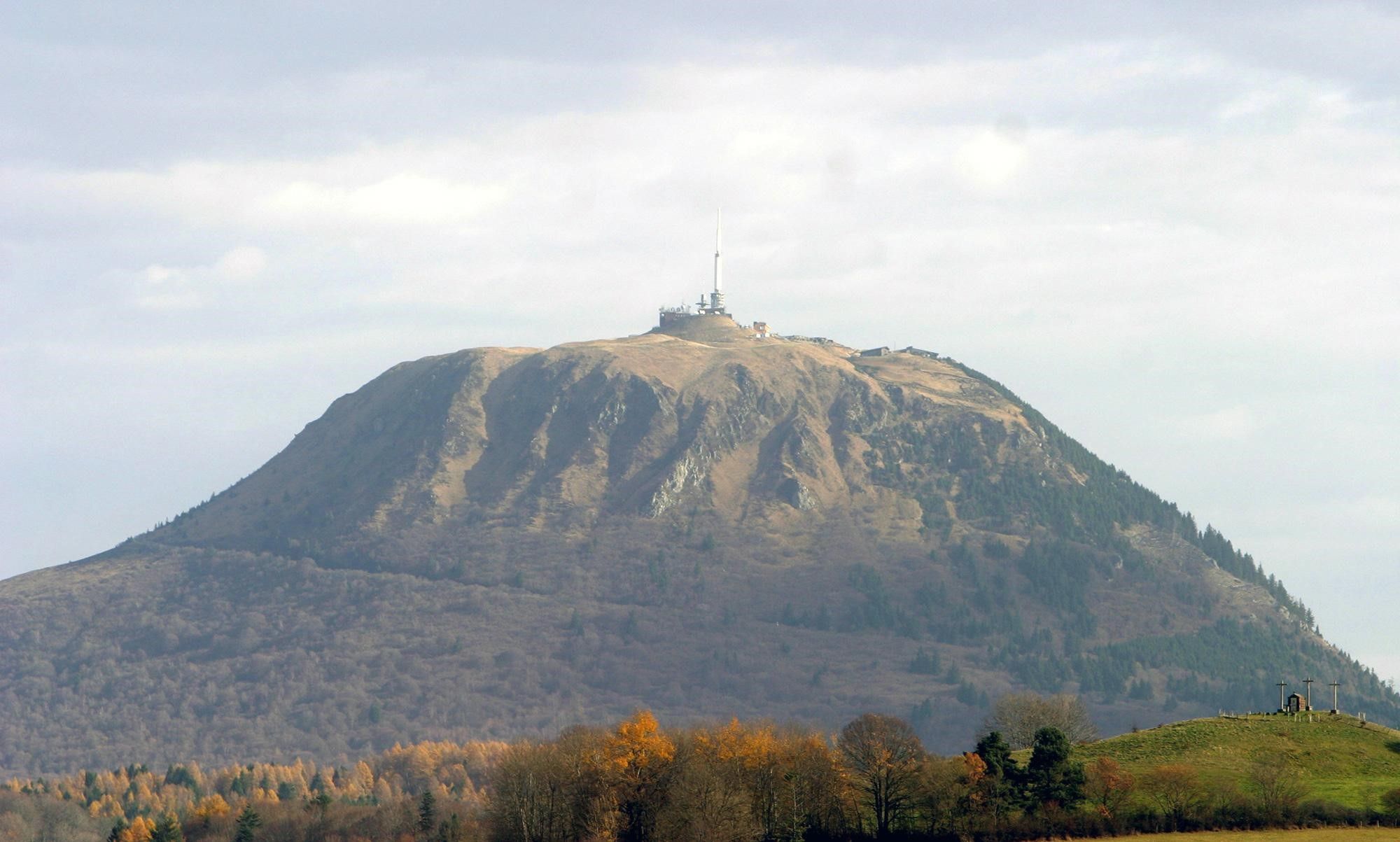 Puy-de-Dome, the mythical volcano pass
Puy-de-Dome, the mythical volcano pass
Due to logistical difficulties in reaching the summit and associated risks due to the masses of spectators, the Puy de Dôme was no longer part of the French Tour for 35 years until 2023, so this is a momentous and exceptional occasion including it for the Tour. The riders will tackle a highly demanding 10% over almost 6km, which no spectators will be allowed access to due to the narrowness of the path. The first half of the climb is straight but then starts to curve and spiral like a curled-up snake on a very narrow road alongside a railway around the volcano tip.
Legendary tales and ancient history embedded in lava
The inactive volcano was, up till 1988, the battleground of many cycling Tour legends who sent fiery sparks flying as they hit swords up the slopes. The Puy de Dôme is one of the iconic and mythical climbs of the Tour where victors such as Fausto Coppi in 1952, Federico Bahamontes, Julio Jimenez, Felice Gimondi, Luis Ocana, Lucien Van Impe and Joop Zoetemelk claimed first place on the podium. Eddy Merckx, in 1975, sustained an injury from a spectator while wearing yellow and could not win his 6th Tour de France due to losing the jersey the next day after a fall. It was here that Poulidor and Anquetil had their famous battle, even leaning against each other during their dramatic battle.
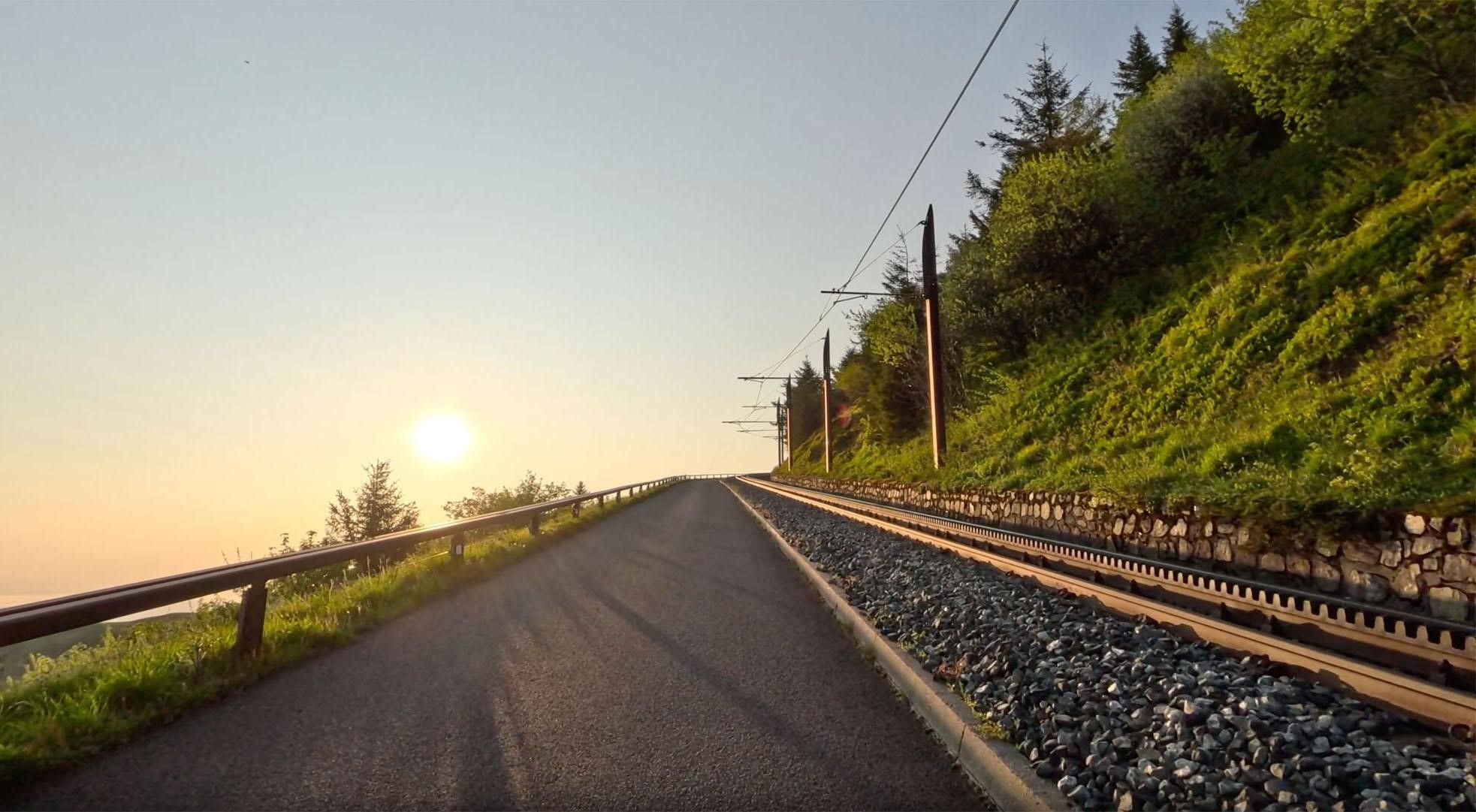 Puy de Dôme with the narrow path and railway alongside spirals up to the summit
Puy de Dôme with the narrow path and railway alongside spirals up to the summit
Puy de Dôme is above Clermont-Ferrand or the Augustonemetum in Roman times, and one can see a 2nd-century Gallo-Roman Temple de Mercure at the summit.
Strava data and mapping tools have helped to create the Tour de France routes, including the iconic Puy de Dome. Compare your time to the KOM and QOM on Strava on this famous climb.
Stage 16
A legendary segment from Passy to Combloux Individual Time Trial
After the second rest day, the only individual time trial occurs in the Arve Valley in the Rhone Alpes near Sallanches. The pros must overcome the short and sharp Côte de Domancy, a 2,5km climb at a steep 9,4% gradient with 221m before the road continues to climb to the line for another 3,5 km at 5%. Will they need to change bikes at the bottom of the climb? The 22km route between Passy and Combloux will test the riders' bike handling and climbing skills as much as their time-trialling abilities on this rolling course.
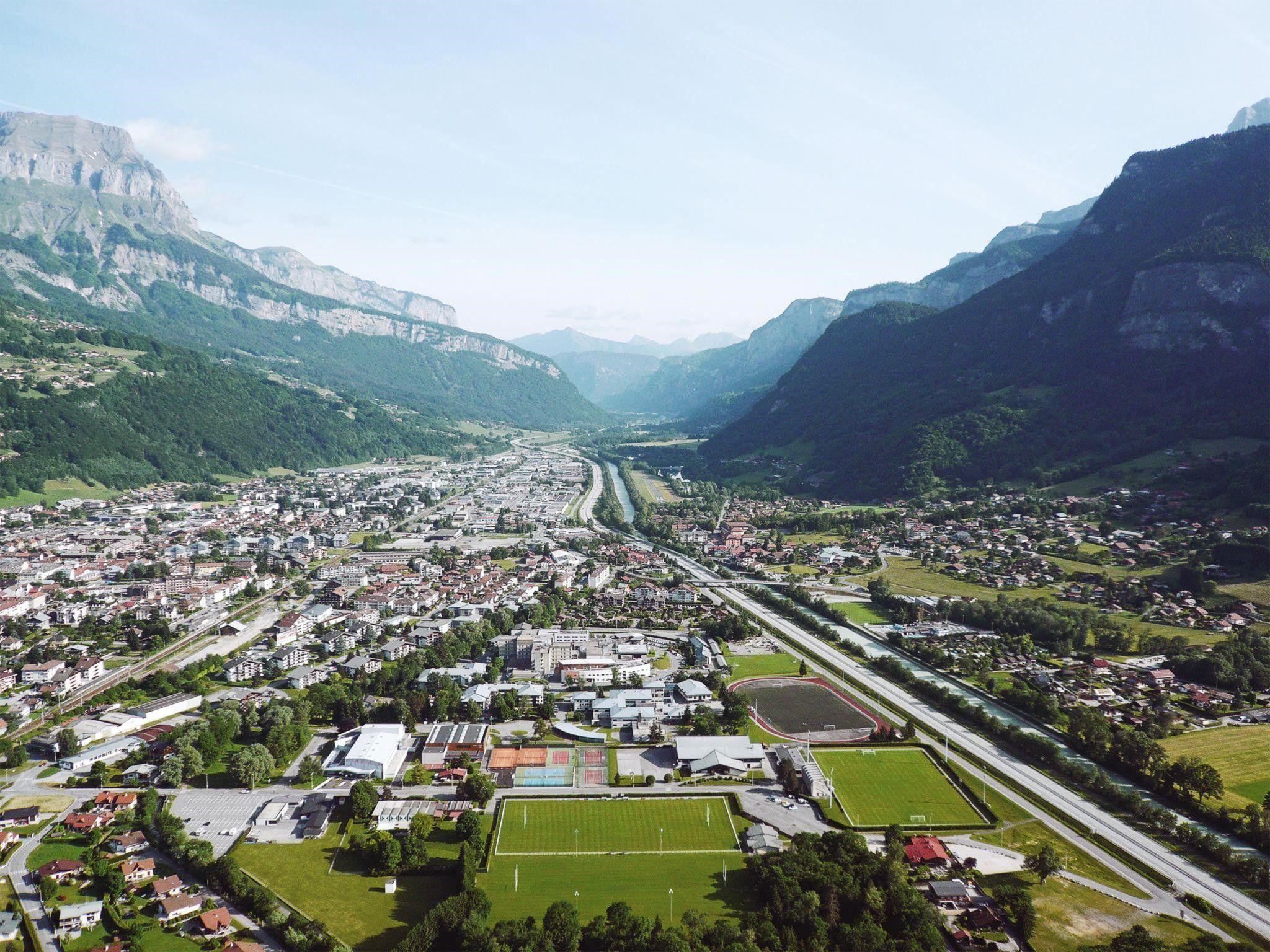 The Arve Valley in the Rhone Alpes near Sallanches
The Arve Valley in the Rhone Alpes near Sallanches
The Côte de Domancy in history
The Côte de Domancy was where Bernard Hinault triumphed in a solo victory at the 1980 World Championships road race. The route also formed part of the final week time trial in the 2016 Tour de France. The last time the pros time-trialled up the climb in the Tour was in 2021.
Stage 17
The Col de la Loze
The Col de la Loze is a rollercoaster climb with many changing gradients that follow every curve of the mountainside, used for the second time ever in the Tour on what will undoubtedly be the queen stage of over 5,000m of tortuous ascent. The Col is ranked one of France's most challenging climbs to conquer, situated in the Savoie department in the Auvergne-Rhône-Alpes region in south-eastern France, nestled within the Vanoise National Park.
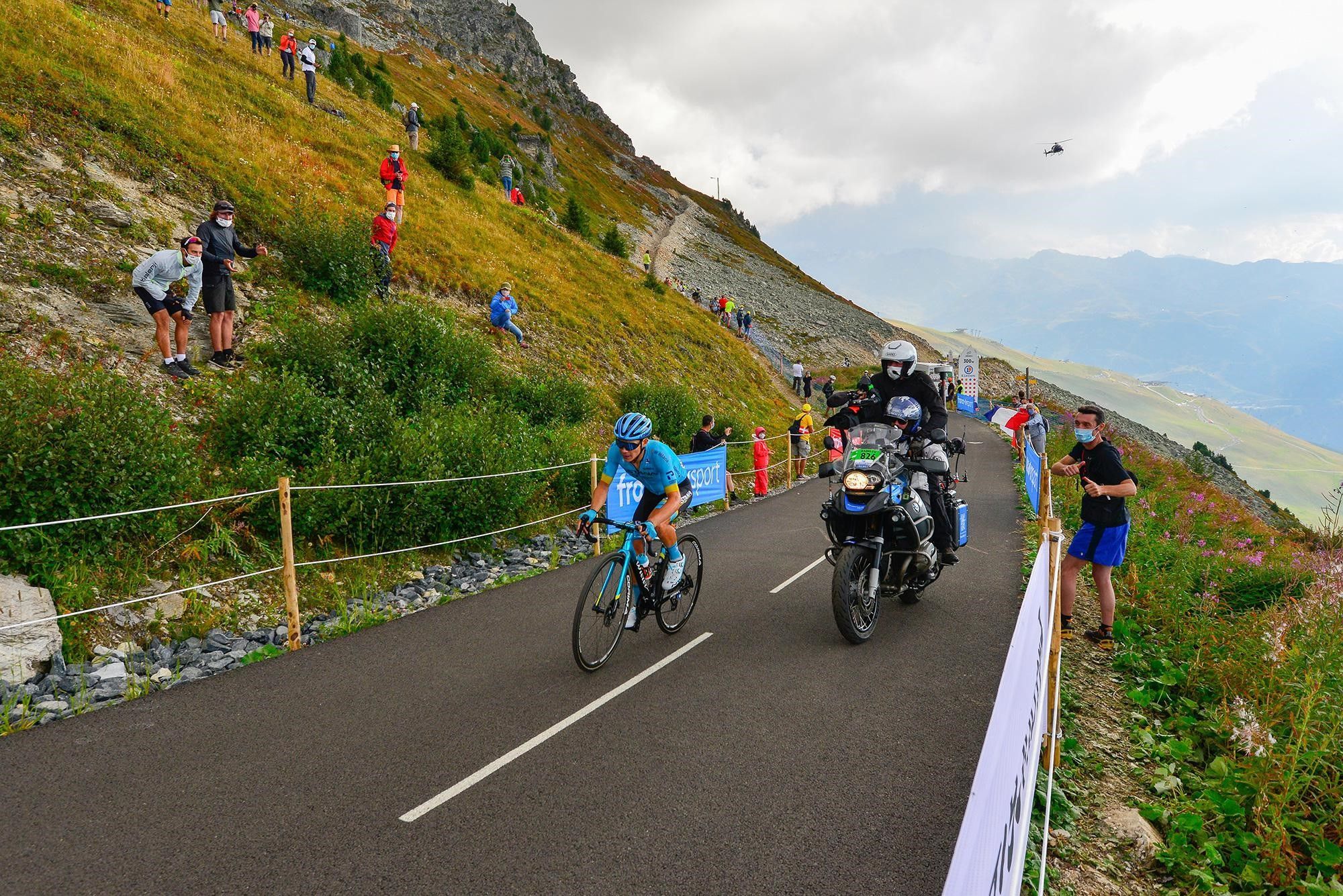 Miguel Angel Lopez took a great solo victory at the summit of the Col de la Loze in 2020
Miguel Angel Lopez took a great solo victory at the summit of the Col de la Loze in 2020
The climb begins in the forest and follows through alpine pastures with magnificent open views of Mont Blanc, the beautiful Méribel valley and la Grande Casse via 17 hairpin bends. The main characteristic of this challenging profile is the frequent and abrupt changes of gradient up to 23% and the narrow road. The Souvenir Henri Desgrange, which symbolises the highest point of the race, is presented as a prize for the rider who reaches it first.
Characteristics of the climb
On this queen stage, the pros have to race 166 km and conquer the Col des Saisies firstly at 13,4km long (1,650m) and average 5%, then via the Beaufort valley up to the Cormet de Roseland, 19,9 km long at 6%, then the fourth climb of Notre-Dame-du-Pré through Brides-Les-Baines to the final hurdle - the Courchevel (a climb and a top resort in terms of its hotels and ski destination), then to Meribel and then the feared Col de la Loze.
The climb starts gently at 7% gradients, and then the steep ramps follow for the next 5 km, followed by a 6 km downhill before reaching the final 10% 600m sting in the tail up to the Altiport. With this rolling and mountainous profile, it should be a day for breakaways to happen.
The views will take one's breath away, but so will this climb, rated the eighth highest and one of the toughest in France. Diarise July 19th to watch the pros battle it out on these savage slopes with crowds of spectators coming to watch the show on this famous col closing in energetically and noisily on the narrow path on the final 6 km, part of the Via 3 Vallées bicycle path. The climb averages a 7.5% gradient for 22.6 kilometres gaining nearly 1,700 metres.
Background to the Col de la Loze
Tour legends have shown their mettle at the altiport summit of Courchevel: Richard Virenque won there in 1997, followed by Marco Pantani in 2000 and Alejandro Valverde in 2005. Miguel Angel Lopez took a great solo victory at the summit in 2020.
Strava data and mapping tools have also helped to create the Col de la Loze route. Take a look at the Strava KOM and QOM and compare your time to the pros.
Get into the vibe and get to know and follow the riders and their teams on Strava and see their uploads after each stage. You can follow the world's best pro racers to see their performances on every stage and show your support by sending them kudos.
Motivate yourself on Tour de France routes on ROUVY and think like a pro does knowing that:
- Consistency in one's training is key.
- Focus and the ability to filter out any distractions will get the job done.
- Crucial recovery days after hard efforts or supercompensation days are there to make you stronger!
Immerse yourself in the exciting Tour de France atmosphere from home on your trainer while testing your perseverance and endurance limits. Keep the passion for your riding alive and at the very top of your training agenda with the help of realistic ROUVY routes.
